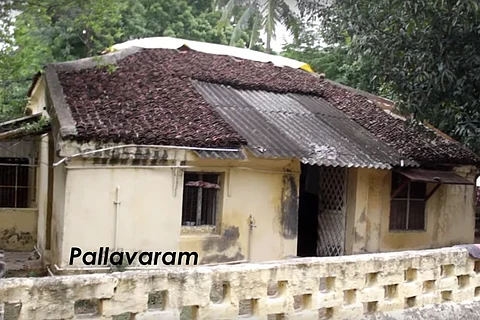

The red-bricked Indo-Saracenic buildings of Chennai are a reminder of the city’s colonial past. The Portuguese, the Dutch and finally the English arrived in Chennai, then Madras, and left behind a distinct trail. The community of Anglo-Indians in the city still upholds the dwindling group’s fascinating history and culture.
A documentary screening titled The Anglo-Indians of Madras – Case Study Pallavaram held as part of Madras Day celebrations on August 22 highlighted the community’s presence in the city.
This episode is the sixth instalment to the on-going documentary series directed by Richard O’Connor, Superintendent, Customs and Harry MacLure, editor, Anglos In The Wind (AITW). Nicholas Moses is the third member to this team who handles camera and editing.
To beginnings
In the year 1947, Anglo-Indians in Madras accounted for over 1 lakh while today, the number stands at less than 40,000. The seed for this documentary was sown by well-known late historian Muthiah, who is one among the pioneers of the Madras Day Celebrations.
Speaking to TNM, director Richard says, “We started doing this in 2016, mainly for Madras Week as suggested by Muthiah. It was not as if we were not a part of the Madras Day celebrations before. We had conducted heritage walks for about 8 - 10. But in 2016, we made a 50 minute documentary to be screened at an event. In it we had covered all the areas populated by Anglo-Indians.”
This 50-minute documentary, however, sparked off a deeper passion in both Richard and Harry to document more. “Soon after the first screening, it became a thing for the community. Now children and grandchildren will know what our culture was in the past. We began doing in depth documentation, region-wise, mainly to document for posterity. It is now being regularly shared on the YouTube channel Pepper Watcher,” adds Richard.
The channel now has six episodes, covering areas like Santhome, George Town, Royapettah, St Thomas Mount and Pallavaram, with Vepery taking up three parts. “It was more of a centre for education and so we had plenty of schools to cover,” he explains.
The Anglo-Indians of Pallavaram
In the 6th episode that was screened for Madras Day this year, marking three years since they began their journey, Richard and Harry explore the veteran lines and other areas in Pallavaram where a small group of Anglo-Indian families live. They reminisce about their ballroom dancing days, houses with their “quaint, colonial hangover” and about women who played hockey, matches between married men and the bachelors and other regular weekly events.
In the documentary, musician Paul Jacob, born in Pallavaram, talks about how his father, Lancy Jacob, started the entire tradition of walking from Madras to Velankanni in the ‘70s. “A spontaneous decision made by anxiety instilled by doctors that he could lose his wife or child at the time of child birth,” explains the narrator (Richard) in the video.
“Dad was joined by his manager Padmanabhan, a Brahmin guy, his Protestant neighbour and drinking partner Peter Letoille. They met an old Muslim gentleman at Tambaram who was on his way to Nagore. The very first walk was unbelievable. Had a Catholic, Hindu, Protestant and a Muslim,” smiles Paul in the documentary.
We also see actors Andrea, Sriranjani (born Genevieve) discussing their roots a little in this episode. Discussions are also made on the kind of stereotypes the community encounters, their early entry into films and how Anglo-Indian women were the first to venture out from their homes and join as secretaries, nurses and air-hostesses.
Richard calls it human nature to stereotype the other but points out some of the interesting roles Anglo-Indians have played in the society. “Anglo-Indian women were the first to come out and work as secretaries, nurses, air-hostess. We also had women hockey players, playing games in their shorts. Now it is common but Anglo-Indian women did it back then,” he says. This episode also talks about how the community has branched out with many of the youngsters finding jobs overseas.
Dwindling population, growing interest
Anglo-Indian novelist Allan Sealy referred to the Anglo-Indian community as “A community that speaks their father’s tongue and eats their mother’s salt,” and the documentary series’ very first episode alludes to this quote.
Yet, the fact that the community is losing its old-world charm is undeniable. The documentary itself explores different kinds of people from the community. Richard also shares some of the instances that showed just how multi-hued the community is.
“I got to understand a new side to people. People are successful, some not. In one of the episodes we have spoken to a drug addict who has overcome his addiction. Such wide range of people we were able to meet that we wouldn’t have known otherwise. We tend to sit on our high horses and stay content. This was a humbling experience,” he says.
“There was a time when we called it our heyday. When we lived in proximity and had frequent parties. We had our own vibrant culture. But now people are busy with work and our numbers have all gone down too,” says Richard, adding, “But when we do gather for events conducted in small pockets, we get to see just how many of us are still around. You have to be there to know that it is still vibrant.”
As for Richard, this documentary is not meant for a filmy audience, to have a wider reach. “This is not an artsy, high funda work. You can see that there’s a lot of talking and might appear mundane, to a viewer at some points. But our intent is not to reach a wider audience. It is more of a catalogue, a work that will bring us closer together. This is for the community itself,” he beams.